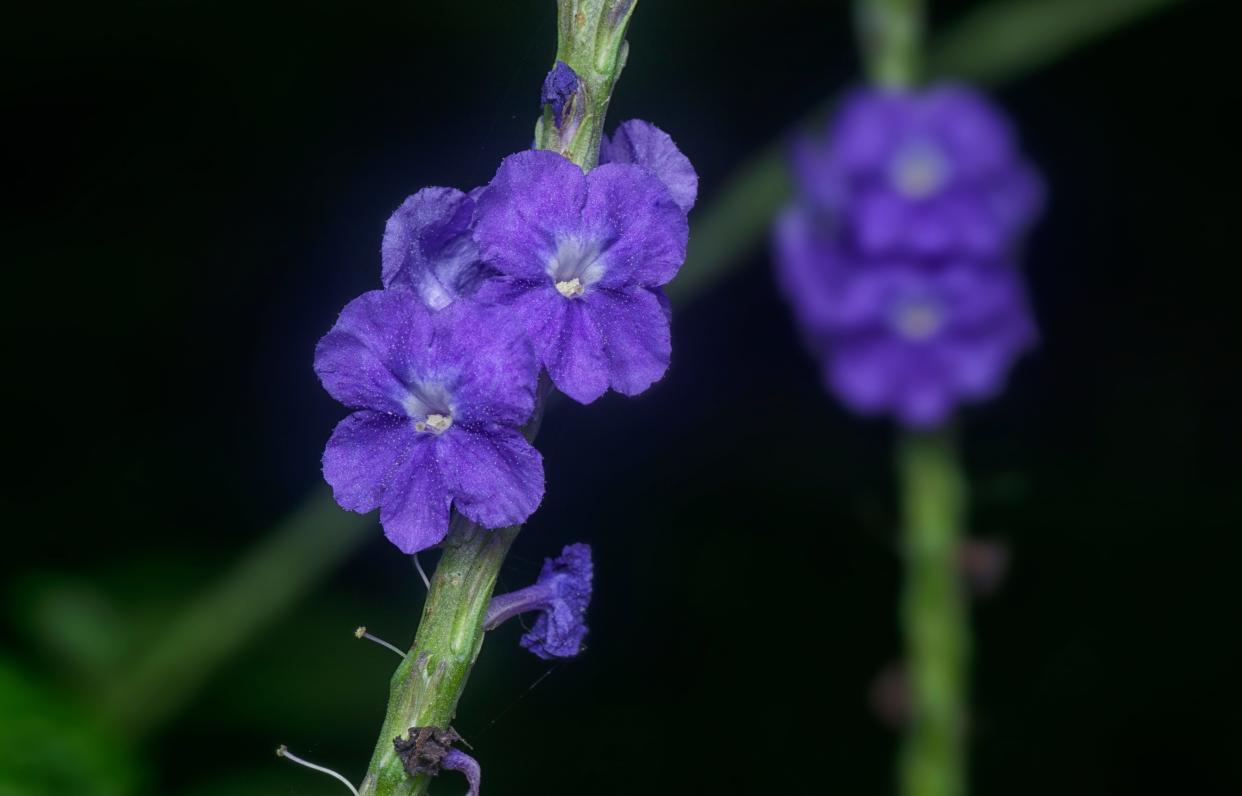CHARLES REYNOLDS: Exotic competition for native nectar plants

Florida boasts a wealth of butterflies, bees and hummingbirds. But many of those critters are feasting on exotic nectar instead of exploiting native sources. For example, two non-native porterweeds (Stachytarpheta species) are multiplying in the wild, replacing our native blue porterweed. That’s not surprising because the exotics, including coral snakeweed and nettle leaf porterweed, are sometimes mislabeled in nurseries. In addition, the exotics can grow 6 to 7 feet tall, literally putting our sprawling, 1-to-3-foot native in the shade.
Porterweeds feature thin, whiplike spikes on which small but brilliant flowers open sequentially over a period of weeks. Blue porterweed’s blossoms are generally some shade of blue, while coral porterweed’s flowers are pinkish. Plants thrive and flower in sun, part-day sun and light shade, often for much of the year in Central Florida. Blue porterweed (Stachytarpheta jamaicensis) is short lived, but it reseeds readily. Propagate by seeds and stem cuttings, and by transplanting volunteers.
Also dismaying is a native milkweed (Asclepias tuberosa) and the turf war it’s waging against an intruder (A. curassavica), from Tropical America. The exotic, called Mexican milkweed, has become widely naturalized here, aided and abetted by both gardeners and the nursery industry. Florida is actually home to 20 Asclepias species, including swamp milkweed, a white-flowered plant for boggy sites.
But butterfly weed, native from Southern Canada to South Florida, is the most popular with gardeners, and it’s at home on sandy, sun-drenched sites. From spring until autumn, this 1-to-3-foot, herbaceous perennial is topped with clusters of orange blossoms. The flowers provide a bounty of nectar for hungry butterflies, and — vitally important — serve as a larval host plant for monarch and queen butterflies.
Mistaken identity may be at the root of a mix-up regarding our native firebush (Hamelia patens var. patens). A fine wildlife plant, firebush’s red and orange blossoms attract butterflies and hummingbirds, while its small, purple fruit are gobbled by birds. But this shrub can grow over 10 feet tall, necessitating occasional pruning in some landscape settings. That explains the appeal of a so-called dwarf.
But is dwarf firebush just a smaller version of the species? Probably not. According to native plant expert Roger Hammer, the so-called dwarf — which can grow 8 feet tall — is Hamelia patens var. glabra. Even worse, the Bahamaian firebush (H. cuprea), a totally different species, is actively hybridizing with Florida’s native firebush.
Charles Reynolds, a Winter Haven resident, has an associate’s degree in horticulture and is a member of Garden Writers Association of America. He can be reached at ballroom16@ aol.com
This article originally appeared on The Ledger: Non-native plants are flourishing and enticing butterflies.

